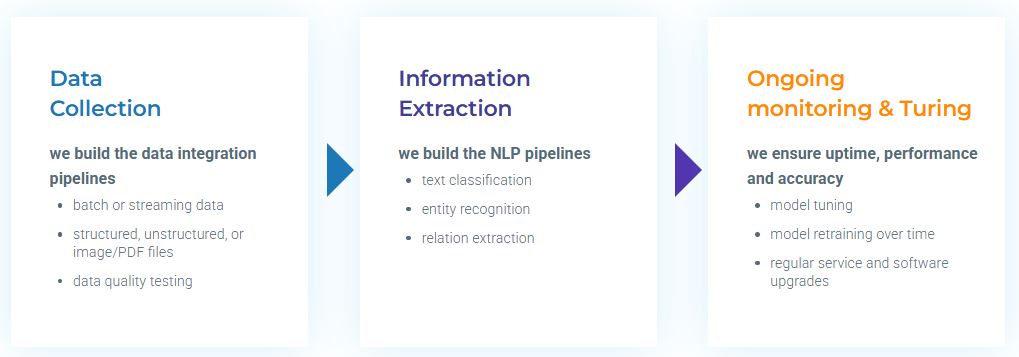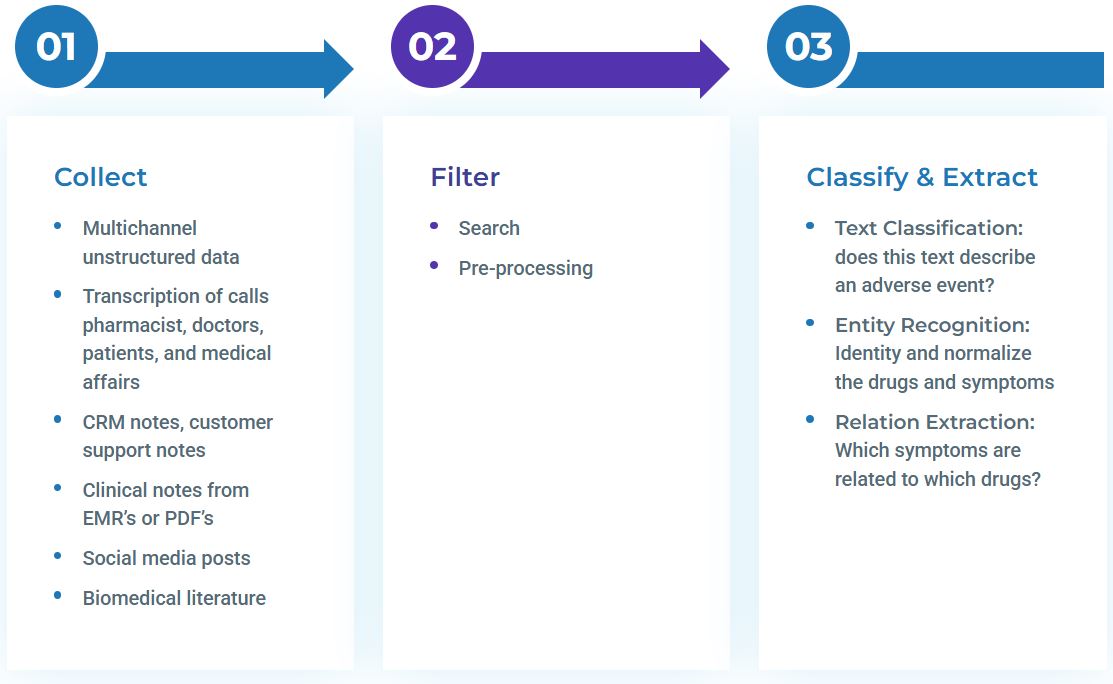Adverse events remain a persistent and costly challenge in healthcare. From medication errors and delayed diagnoses to post-operative complications, these incidents undermine patient safety and inflate the cost of care. As the industry evolves toward value-based reimbursement models, preventing these events has become a clinical and operational imperative.
Predictive analytics offers a proactive path forward. By applying machine learning and natural language processing (NLP), healthcare systems can identify at-risk patients before harm occurs, enabling earlier intervention, reducing readmissions, and improving patient outcomes.
Why Adverse Events demand a predictive approach?
Approximately one in ten hospitalized patients experiences an adverse event, with medication-related complications accounting for a significant portion¹. Traditional identification methods, retrospective chart reviews and voluntary reporting, are labor-intensive and often miss early signals hidden in clinical narratives.
Predictive analytics, particularly when powered by Healthcare NLP, shifts this dynamic by extracting insight from unstructured data. When applied to clinical notes, pathology reports, and other free-text data sources, AI models uncover risk patterns that standard EHR dashboards cannot surface.
From detection to prevention: What is the role of Healthcare NLP?
Healthcare NLP is instrumental in this transition. Tools such as John Snow Labs’ Adverse Drug Reaction (ADR) Detection Models identify relevant clinical mentions, assess assertion status, and link findings to specific medications, all in real time. These models use deep learning to understand context, such as distinguishing “the patient reports dizziness” from “dizziness denied.”
This layered understanding enables predictive systems to move from retrospective analysis to real-time alerting.Real-time signal detection: Which capabilities must have a Adverse Drug Reaction detection pipeline?
John Snow Labs’ ADR detection pipeline exemplifies a multi-layered approach:
- Named Entity Recognition (NER): Tags key concepts like medications, symptoms, and clinical conditions.
- Relation Extraction: Connects adverse effects to causative drugs.
- Assertion Status Detection: Filters out negated or hypothetical statements to improve clinical relevance.
These capabilities support sophisticated early warning systems. However, it’s important to recognize implementation complexity. Despite growing research, “only one model has been incorporated into clinical practice with a targeted intervention and then only within the organization in which the model was developed.” This gap highlights that successful deployment demands more than technical accuracy, it requires careful alignment with clinical workflows and institutional readiness.

Technology alone cannot solve the problem of adverse events. Research indicates that patient safety culture plays a significant role in outcome variability. One study showed that “increased scores of nine Patient Safety Culture dimensions were significantly associated with a reduced perception of adverse event rates”2.
This underscores that implementation success depends as much on cultural transformation as it does on algorithmic performance. Integrating predictive analytics into high-functioning care environments requires collaboration between IT leaders, clinical teams, and safety officers.
What are the longitudinal trends in terms of progress and persistent gaps?
Between 2010 and 2019, in-hospital adverse event rates declined significantly for certain conditions such as acute myocardial infarction, heart failure, pneumonia, and major surgeries3. However, for all other conditions, rates remained flat, holding at 70 adverse events per 1,000 discharges.
This mixed progress reveals the challenge ahead: while targeted interventions yield results, broader system-wide improvements will require sustained innovation in both analytics and care delivery models.
Which strategic implications must healthcare leaders consider in relation to the use of AI to prevent Adverse Drug Events?
For CMIOs, predictive analytics enables smarter triage, more efficient workflows, and improved quality outcomes. CIOs and CISOs benefit from scalable, secure deployments, particularly when using platforms like Healthcare NLP that support HIPAA-compliant, no-code integration.
But the decision to implement must also account for adoption barriers, validation standards, and the readiness of clinical stakeholders to act on AI-generated insights.
Looking ahead: From reactive response to proactive prevention
Predictive analytics supported by clinical NLP represents a necessary evolution in patient safety. Yet, its potential will be fully realized only when paired with cultural alignment, clear governance, and real-world validation.
As healthcare organizations plan their next steps, a realistic view is essential. The promise of preventing harm before it occurs is real, but it must be pursued with both strategic vision and operational discipline.
References:
[1] World Health Organization. Patient Safety: Making Health Care Safer. https://www.who.int/news-room/fact-sheets/detail/patient-safety [2] Agency for Healthcare Research and Quality (AHRQ). Patient Safety Culture Surveys. https://www.ahrq.gov/sops/index.html [3] Agency for Healthcare Research and Quality (AHRQ). 2023 Chartbook on Patient Safety. https://www.ahrq.gov/research/findings/nhqrdr/chartbooks/patientsafety/index.html






























